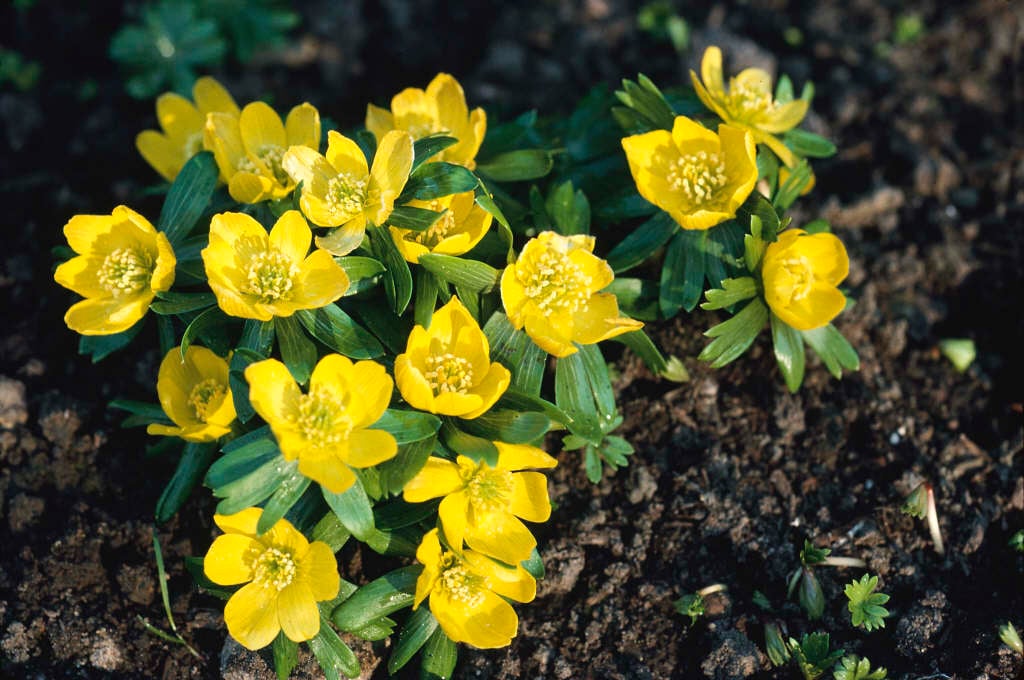Eranthis hyemalis

winter aconite
A perennial to 10cm in height, with cup-shaped bright yellow flowers 3cm in width from late winter, surrounded by divided leafy bracts. Basal leaves are rich green, divided into several lobes
Size
Ultimate height
Up to 10cmTime to ultimate height
2–5 yearsUltimate spread
0–0.1 metreGrowing conditions
Moisture
Moist but well–drained, Well–drainedpH
Acid, Alkaline, NeutralColour & scent
| Stem | Flower | Foliage | Fruit | |
| Spring | Yellow | Green | ||
|---|---|---|---|---|
| Summer | ||||
| Autumn | ||||
| Winter | Yellow | Green |
Position
- Full sun
- Partial shade
Aspect
South–facing or East–facing or North–facing or West–facing
Exposure
Exposed or Sheltered Hardiness
H6Botanical details
- Family
- Ranunculaceae
- Native to GB / Ireland
- No
- Foliage
- Deciduous
- Habit
- Columnar upright
- Potentially harmful
- Pets: Harmful if eaten. For further information and contact numbers regarding pets, see the HTA guide to potentially harmful plants
- Genus
Eranthis are small tuberous perennials with palmately or pinnately lobed basal leaves and cup-shaped flowers held above a collar of deeply lobed stem leaves
- Name status
Correct
- Plant range
- France to Bulgaria
How to grow
Cultivation
Grow in a humus-rich, moderately fertile soil that doesn't dry out. Tolerates most soil types but does best in alkaline soils
Propagation
Propagate by seed, sown in pots in a cold frame in late spring or separate tubers in late spring after flowering. Dry tubers may not establish well
Suggested planting locations and garden types
- Cottage and informal garden
- Wildlife gardens
- Wildflower meadow
- Underplanting of roses and shrubs
- Flower borders and beds
- Ground cover
Pruning
No pruning required
Pests
May be susceptible to slugs
Diseases
May be susceptible to smuts
Get involved
The Royal Horticultural Society is the UK’s leading gardening charity. We aim to enrich everyone’s life through plants, and make the UK a greener and more beautiful place.
